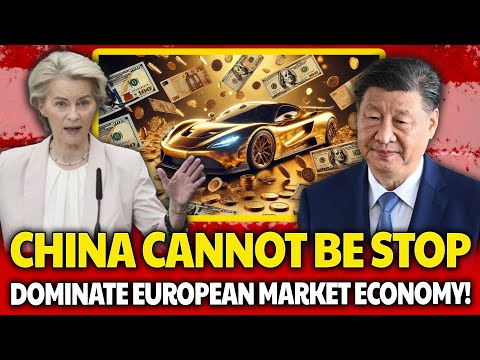Chinese Automakers Forge Ahead in Europe Despite Tariff Barriers
April 8, 2025 – As global trade tensions escalate, Chinese automakers are proving resilient, carving out a growing presence in Europe despite formidable tariff barriers imposed by the European Union. With strategic investments, localized production, and a focus on electric vehicles (EVs), companies like BYD, Chery, and SAIC are not only weathering the storm but also gaining ground in one of the world’s most competitive automotive markets.
Tariff Challenges: A Rocky Start
The EU’s relationship with Chinese automakers has been strained since Brussels launched an anti-subsidy probe in 2023, concluding that state-backed Chinese EV manufacturers benefited from unfair advantages. In response, the European Commission imposed additional tariffs in June 2024, piling onto existing duties. BYD now faces a total tariff of up to 27%, Geely (owner of Volvo and Polestar) contends with 29%, and SAIC Motor (behind MG) shoulders a hefty 48%. These levies aimed to protect European manufacturers like Volkswagen, BMW, and Stellantis from a flood of low-cost Chinese EVs.
The timing couldn’t have been worse for Europe’s auto giants, already grappling with sluggish demand and a costly shift to electrification. German carmakers, in particular, decried the tariffs, fearing retaliation from China—where they rely heavily on sales—would hit harder than the protection offered. Yet, far from retreating, Chinese automakers have doubled down on their European ambitions.
Sales Surge Amid Adversity
Despite the tariff headwinds, Chinese brands are making inroads. Data from early 2025 shows a remarkable 64% year-over-year sales surge in February 2024, capturing 4.1% of the European market—a figure that, while modest, signals growing consumer acceptance. BYD’s Atto 3 and Chery’s Omoda 5 have become familiar sights on European roads, while MG’s budget-friendly ZS EV continues to win over cost-conscious buyers. In Germany, Leapmotor registered 332 EVs in its debut month of March 2025, while BYD’s sales soared 335% month-over-month, per CarNewsChina data.
This resilience stems from a potent mix of competitive pricing, advanced EV technology, and an ability to adapt to local tastes. Even with tariffs inflating costs, Chinese EVs remain cheaper than many European counterparts, appealing to buyers amid inflation-weary times.
Localization: The Winning Strategy
Rather than rely solely on imports, Chinese automakers are investing heavily in Europe to sidestep tariffs and build trust. BYD broke ground on a $1 billion factory in Hungary in late 2024, with production slated for 2026, and is eyeing a second plant in Turkey. Chery has revived Spain’s dormant EBRO brand, partnering with local firm EV Motors to produce Omoda and Jaecoo models at a Barcelona facility starting in 2025—its first European manufacturing hub. SAIC, meanwhile, is exploring assembly options in Poland.
These greenfield investments serve dual purposes: dodging import duties and signaling long-term commitment to European regulators and consumers. “Localization is key,” notes industry analyst Sam Fiorani of AutoForecast Solutions. “By producing locally, they’re not just cutting costs—they’re embedding themselves in the market.” Posts on X echo this sentiment, with users highlighting Chery’s Spanish revival and BYD’s Hungarian push as savvy moves to win local goodwill.
Why Europe Matters
Europe’s allure for Chinese automakers is clear: it’s the world’s second-largest EV market, with aggressive carbon-neutral targets and a consumer base eager for affordable green options. The EU’s 2035 ban on new combustion-engine vehicles amplifies demand, yet domestic manufacturers have struggled to deliver budget EVs at scale—a gap Chinese brands are eager to fill.
Moreover, as U.S. President Donald Trump’s latest tariffs—hitting Chinese goods with a 34% levy atop a 20% base as of April 2025—slam the American market shut, Europe becomes an even more critical battleground. China’s commerce ministry, while vowing retaliation, has restarted talks with the EU to ease EV tariffs, hinting at a thaw in tensions (Washington Post, April 4). This pivot underscores Europe’s role as a lifeline for Chinese export growth.
Competitive Edge and Challenges Ahead
Chinese automakers bring distinct advantages: vertically integrated supply chains, dominance in battery production (e.g., CATL), and years of EV expertise honed in China’s cutthroat domestic market. Models like the BYD Seal and NIO ET5 offer ranges exceeding 500 km and fast-charging capabilities, rivaling premium European offerings at lower price points.
Yet, challenges loom. Brand recognition remains a hurdle—names like Leapmotor and Xpeng lack the cachet of Tesla or BMW. Tariffs, while navigable through localization, still squeeze margins, and the EU’s regulatory scrutiny could tighten further if Chinese market share climbs. German officials, wary of job losses, have called for a tougher stance, with Chancellor Olaf Scholz lamenting U.S.-style tariffs as a “path of losers” (Reuters, March 27).
A Broader Trade War Context
The backdrop is a spiraling global trade war. Trump’s April 2 “Liberation Day” tariffs—10% baseline on all imports, plus reciprocal rates up to 54% on China—have triggered retaliatory levies worldwide, including China’s 34% duty on U.S. goods starting April 10 (Reuters, April 7). The EU, facing a 20% U.S. tariff, is countering with 25% duties on American products, complicating the landscape for all automakers. Ironically, this chaos may “level the playing field” for Chinese brands, as European and Japanese rivals face financial strain in the U.S., per analyst Fiorani (Al Jazeera, April 3).
Looking Forward
Chinese automakers are not just surviving Europe’s tariff barriers—they’re thriving. With sales climbing, factories rising, and a knack for turning adversity into opportunity, companies like BYD and Chery are rewriting the rules of the game. The EU may yet tighten the screws, but for now, China’s EV vanguard is forging ahead, proving that tariffs can slow, but not stop, their European ascent. As one X user quipped, “Chinese EVs are the cockroaches of the auto world—adaptable, relentless, and everywhere.” Hyperbole aside, their momentum is undeniable.
People In This Video
No users are tagged in this video
Tags
No tags available yet








